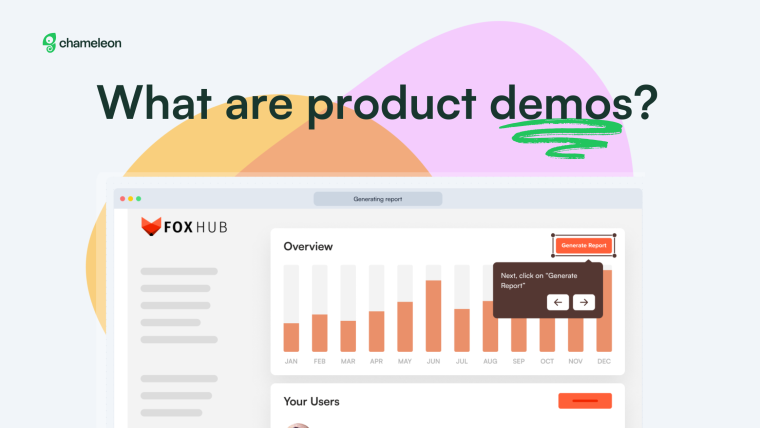This post was contributed by the Founder and CEO of Sherlock, Derek Skaletsky. Sherlock’s Product Engagement Scoring engine helps you get the clarity and insights you need to make product data actionable.
Measuring and tracking Product Qualified Leads (PQLs) is fast becoming a necessary component of a SaaS operation. More specifically those SaaS businesses with a try-before-you-buy model (otherwise known as a product-led model).
This is because using PQLs as a qualifying mechanism for leads is much more effective than the traditional MQL model.
But the value of measuring PQLs goes well beyond its value as a qualification methodology. When you build a PQL process into your product-led operation, you are creating a truly collaborative KPI. A key metric that can unify your entire go-to-market operation. And this is significant—there aren’t many metrics in a SaaS business that multiple departments can rally around.
Traditionally you’ll hear:
“Marketing owns top of the funnel leads”
“Sales owns conversions”
“Customer Success owns retention”
And the unfortunate truth is that most KPIs live in departmental silos, driving more competition and in-fighting than cooperation. But Product Qualified Leads are a truly cross-departmental KPI—everyone has a hand in driving them and can unify to drive company success.
What is a Product Qualified Lead (PQL)?
Let’s start with the basics for those who aren’t fully on board the PQL train as of yet—what exactly is a Product Qualified Lead?
At a high-level, a Product Qualified Lead is a free or trial account that has gotten to a point of initial value with your product.
These are referred to as “Qualified Leads” because these are free accounts that are more likely to convert to paying accounts. They are more “qualified” than accounts who haven’t used the product—or those who have but haven’t used it enough to see its initial value.
New to the PQL game? Check out these resources before you read on:
How to define PQLs
The first step in measuring PQLs as a KPI is to define PQLs for your product. Every product is unique, so how you determine if an account is “product qualified” will be unique to your product and business.
To define “product qualified”, first determine the 4+ things that a new account will need to do in order to reach a point of initial value—a point of Activation. For example, if you offer a project management tool, you might determine that initial value is achieved when an account completes these actions:
Account created
Invited 2+ team members
Created project
Uploaded 2+ files
Created 3+ calendar events
Created 1+ tasks
Completed 1+ tasks
For this product, accounts that do all of these things would be considered Activated during their trial. These accounts have used the product’s core functionality and should, at this point, be able to properly assess its value.
You could determine that an account is “product qualified” after completing all of these actions or you could define “product qualified” as an account that completes 50% of these actions (we would refer to this as 50% Activated). It’s really up to you. But once you settle on a definition, then you can actually start measuring PQLs for your business.
How to measure PQLs
Once you have defined PQLs for the business, there are three specific metrics that you should start to track:
The raw number of PQLs over a time range
PQL rate
PQL to Paid conversion rate
Measuring the raw number of PQLs
Obviously, the first thing to measure is the raw number of PQLs you are receiving over a given time period, most commonly weekly or monthly—or even better, measure both. Measuring PQLs per week can give you a good sense of potential revenue velocity (essential for forecasting) as well as the load on your sales/CS team.
And you obviously want to measure this over time. Tracking raw PQLs on a monthly basis is also a good way to understand if any changes in product, onboarding, or activation process are having a positive effect.

Measuring your PQL rate
Along with measuring the raw number of PQLs you are landing in a given period, it is equally important to measure the PQL rate.
A PQL rate is the percentage of new signups that reach PQL status in a given time period. This is an essential metric because it lives independently of the number of signups you are receiving in a period. It actually a better measurement of your activation process than raw numbers.
So, if you land 10 PQLs last week—is that good? Well…it depends, you can’t just look at one number in isolation. How many signups did you get?
If you got 10 signups and scored 10 PQLs…I’d say that’s very good. But if you got 1,000 signups and landed 10 PQLs. Hmmm...

Look at the table above and think about which business you’d rather have. High PQL rates mean speak volumes about your current Activation process. Let’s call it Product-Activation fit. You have built a product that can deliver quick value to its users as well as building an onboarding/activation process that effectively ushers your accounts to that point. A high PQL Rate is a green light to invest more in top-of-funnel acquisition.
Low PQL rates mean…well, the opposite. It can mean there are issues with your Activation process—that could mean there are problems with your in-app onboarding, messaging, support, etc. It could also be a sign that your product isn’t built in a way that will easily allow users to find their way to first value easily, you want them to find their “aha moment” ASAP.
Measuring the PQL to Paid conversion rate
This third metric is important because it helps you understand if your offering is delivering enough value to get people to actually pay for it. To calculate a PQL to Paid conversion rate (to simplify things, we’ll call this a PQL conversion rate), simply divide the number of accounts that went from PQL to Paid by the total number of PQLs in a period.

Converting PQLs into Paid customers at a high rate is a very promising sign. It means that it’s clear to your users the value they will gain when they start paying. It means that your upgrade flow is working well (if you offer self-serve upgrades) or that your Sales team is clicking.

With that said, if you are converting at too high of a rate, it may mean that you are pricing yourself too low—leaving money on the table!
Now, if your PQL Conversion rate is too low it could mean a few things. At best, it could mean that your upgrade flow isn’t clear. At worst, it could mean that your product just isn’t delivering enough value to justify paying for it—it happens and you can keep building!
A low PQL conversion rate could also mean that your pricing is a bit too high or that your users are getting enough value without paying (in the case of a freemium offering). You might find that you aren’t communicating the actual value of an upgrade very well. There are plenty of avenues to explore and a low PQL conversion rate is by no means the end of the world.
Turning PQL metrics into KPIs
All three of the above PQL-based metrics make for great KPIs for a SaaS business. If you’re wondering which one is more important, the golden snitch on which you should focus, well… it all depends.
If you’re purely focused on growth, the growth in raw PQLs landed per week is the right metric for you
If you’re focused on monetization, tracking that PQL Conversion rate is probably the best metric to look at
If you’re looking at how your whole Activation process is working, focusing on PQL rate is a great idea—this metric speaks to the quality of a customer’s initial experience with your product.
You should be tracking all of these PQL-based metrics—but you can adjust your KPI focus over time based on which metric makes the most sense for your business at that time.
Why are PQL-based metrics so unifying?
If you have a SaaS product with a try-before-you-buy offering e.g. free trial or freemium, PQL-based metrics are nothing short of a view into how well you are delivering on your chosen business model. They tell you if your system is working efficiently and they serve as validation of everything you are doing.
And that is certainly not department-specific. In fact, your entire customer-facing organization is involved in the pursuit of PQLs.
PQLs for Marketing
For your Marketing team, high PQL counts mean that acquisition efforts are not only bringing in more leads but more of the right ones. It means that there is great alignment with the use cases on which the product delivers and Marketing’s messaging, targeting, and channel strategies. Also, if Marketing (or Growth) is involved in the initial customer experience (post signup), PQL rates are an indicator of success.
PQLs for Product
What would your Product team be without PQLs?! Strong PQL rates mean that new users are finding value in the Product AND they’re finding their own way there. This early experience is product-led and it means that the in-product onboarding flow is working and customers are having an easy time navigating to Activation. Since PQLs convert to paying customers more often, for the first time, PQLs give Product a seat at the revenue table finally, welcome.
PQLs for Sales
For Sales teams, PQLs represent their qualified lead list. High PQL counts mean more pipeline. PQLs are also accounts that have already gotten some initial value from the product, which means less “selling” and higher likelihoods of closing. A long list of PQLs is like Christmas for a SaaS salesperson, so fill up Santa’s PQL sack.
PQLs for Customer Success
For your CS teams, PQLs not only represent receptive potential customers but because they are engaged with the product before even buying—they are much more likely of becoming long-term, successful customers. In many cases, Customer Success is involved with the production of the help assets, training videos, and onboarding messaging that helps push new accounts to Activation, so these metrics are a validation of their hard work too.
PQLs for Leadership
And, of course, PQLs will resonate right up to the board level because more PQLs mean more closed deals. More efficient sales. Lower CAC. More top-line growth. More overall business value. Giddy-up!
Final thoughts on PQLs
PQL-based metrics are true windows into the effectiveness of your entire go-to-market organization. You should be using them, learning from them, and sharing them with the entire organization now (if you aren’t already).
Watch the Lifecycle Messaging Masterclass
Learn how to create effective and contextual customer marketing campaigns with ActiveCampaign and Chameleon.




